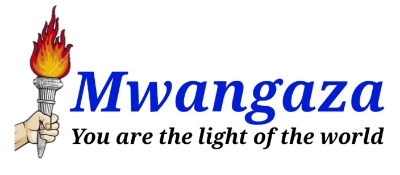Kindly introduce yourself to us.
My name is Wevyn Muganda, a community organiser from Mombasa, Kenya and the founder of Isirika; a grassroots social enterprise in Mombasa. I am passionate about social justice.
When you talk about social justice, what does it mean? In the same line, what is community leadership?
Social justice, in my opinion, means when everyone is able to access equal opportunities and can enjoy their rights including social services. Community leadership, on the other hand, means taking leadership in times of uncertainty within the communities we exist in. Where community refers to social or geographical spaces. Communities can be our immediate physical spaces or the people we are in community with through work, school, shared interests and so on.
In your experience so far as part of social justice and community leadership, in general, what can you say has been your major achievement so far?
My biggest achievement has been seeing some of the young people I have engaged with in different organisations and programs become youth leaders. They are taking up spaces in the movements, entrepreneurship ecosystem and championing their own needs and rights.
Another one is being able to represent the voices of local young people from Mombasa in global decision making spaces like the UN, AU and the UN Security Council.
What role can we, as the youth, play in community development?
Young people can play different roles in community development. I encourage people to use the resources they have whether this is in skills, talent, money or networks. Youth can use their resources to educate, raise awareness, advocate for the social issues that they care about.
Other options include joining organisations and movements, donating to organisations or amplifying social media campaigns through the like,comment and share options
When it comes to organisations aimed at addressing community issues, are there any legal requirements for one to start or be part of one? If so, which are they?
You do not need any legal requirements to address community issues. You can make change through informal groups or movements. These kinds of movements offer more flexibility in terms of the projects and campaigns you can run. However, if you would like to be part of an organisation in the long term and secure funding from major donors, then legal registration is necessary.
Depending on your scope of work and target, the legal requirements will vary. You can register as a CBO, NGO, Trust or Foundation. These are non profit entities, but have different requirements. The easiest for youth organisations is C.B.O. To be part of an existing organisation, legal requirements will vary based on the organisation itself. Bigger organisations tend to be limiting, otherwise many would be open to any kind of youth.
Funding is one major challenge for many non-profit initiatives. How can youth enable their community organisations to be self-sustaining, while at the same time not appearing to be ‘for profit’?
There are different funding models. These are through Call for Proposals, Social Enterprise model/ Income Generating Activities (IGA), Crowdfunding, Giving Circles & Philanthropy /Individual donors. For smaller groups; – crowdfunding, giving circles, IGAs are the best way to go. This is because donors are hesitant to fund startups, you need a track record and your visibility needs to be great as well. However, there are donors that fund small and informal youth networks, so organisations must always try all means possible depending on their capacity to secure funding.
I have experience developing proposals, crowdfunding online, and running a giving circle (Isirika). Each strategy has worked differently but all of them are effective.
Related: Micro-finance opportunities for youth and women in Kenya
What is `running a giving circle’?
A giving circle is a group of people with shared interests and values who come together to give their time, skills and money to make change. Giving circles are dynamic in that everyone’s contributions are valued, and there is no small or big contribution.
Giving circles are unique because the people decide what to do with their resources. Their efforts as a collective are what translates to power, action and change. It involves building power with each other and never letting change be defined by other people i.e with or without donor funding the circle will find a way to make it happen.
Should a group’s activities and initiatives be influenced by the community perception towards such initiatives? What if there is a negative community perception, towards the activities?
A group’s activities must be informed by the community’s perception except when it infringes on their rights. Some communities are not informed of their rights and so they may be resistant to certain projects/interventions. In these circumstances, before beginning any activity, the organisation must work with and consult the community leaders to ensure that they do no harm with their projects.
The core of community leadership is serving the communities’ needs and interests, hence their opinion is the most important.
What are some of the challenges you face in your work and how do you mitigate this?
Challenges include; shrinking civic space and limiting requirements that make it hard to push advocacy messages forward, limited resources, more problems than there are allocated resources to solve them, there are so many injustices it feels overwhelming sometimes, ageism whereby young people are not trusted in decision making spaces.
I mitigate them through continuous capacity development so I can increase my effectiveness as a leader especially in terms of mobilising resources. I also build and maintain relationships and networks that can come through for my projects, exploring alternatives to financing projects such as partnerships and collaboration and building solidarity with other organisations.









